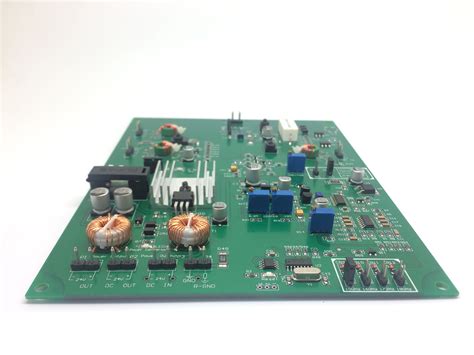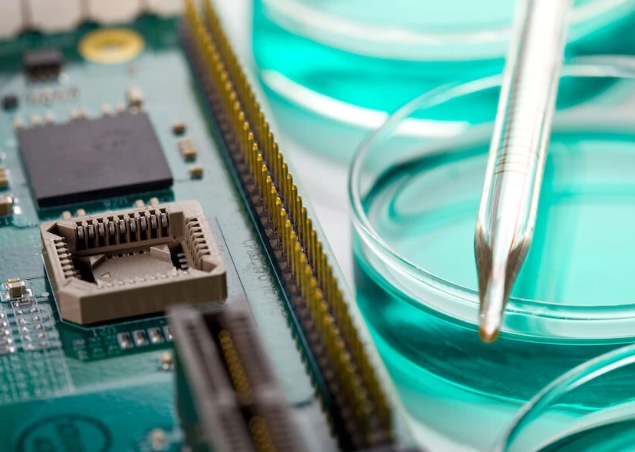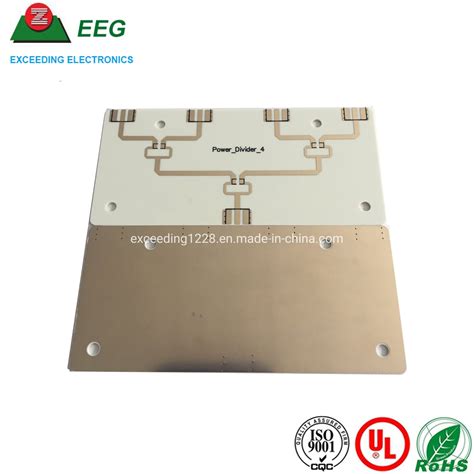Understanding PCBA Control Boards and Their Applications
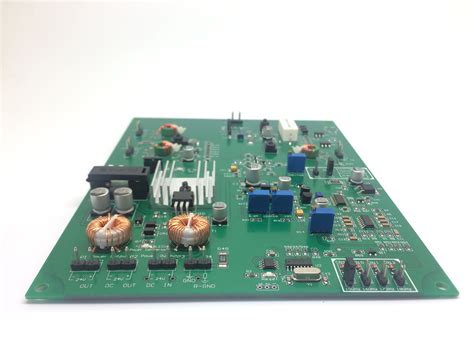
Key Takeaways
PCBA control boards play a crucial role in modern electronic systems, serving as the backbone of various applications across industries. A PCB assembly integrates multiple components on these boards to create efficient and reliable devices. Understanding the key components involved in PCBA and their functions enhances our grasp of their significance. These boards typically comprise elements such as resistors, capacitors, and microcontrollers, which work together to execute commands and control various tasks within a system. With advancements in technology, the design of PCBA control boards is evolving, leading to increased efficiency and reduced manufacturing costs.
| Component | Function |
|---|---|
| Microcontroller | Executes instructions based on programmed logic |
| Resistors | Regulate current flow in electronic circuits |
| Capacitors | Store and release electrical energy |
In various sectors, from consumer electronics to industrial automation, these control boards contribute significantly to product performance and reliability. As industries seek more sophisticated solutions, incorporating features such as IoT connectivity has become standard practice, making PCBA control boards even more essential in driving innovation. Thus, recognizing how these components affect efficiency can provide valuable insights into optimizing designs for future applications.
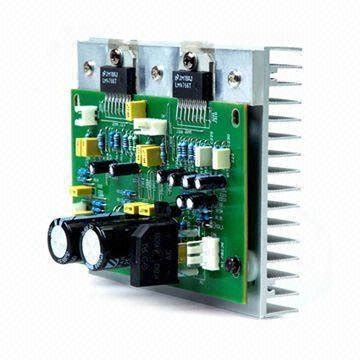
Introduction to PCBA Control Boards
In today’s fast-paced technological landscape, PCBA control boards (Printed Circuit Board Assemblies) have emerged as critical components within a myriad of electronic devices. These boards serve as the backbone of electronic systems, integrating various elements such as resistors, capacitors, and microcontrollers onto a single substrate. The versatility of pcba technology allows for the combination of multiple functions—ranging from power management to data processing—within a compact form factor, thus enhancing the overall performance of electronic systems. The design of a PCBA control board is tailored to meet specific requirements, ensuring optimal efficiency and reliability in diverse applications. As industries evolve and demand smarter solutions, understanding the structure and functionality of these control boards is essential for realizing their potential in innovative electronics. With their ability to streamline processes and reduce costs, pcb assembly remains a vital subject for engineers and manufacturers alike. This exploration into PCBA control boards will illuminate their significance in modern electronics and underscore their role in driving technological advancement across various sectors.
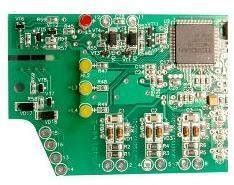
Structure and Components of PCBA Control Boards
PCBA control boards, or printed circuit board assemblies, play a crucial role in modern electronics by integrating various components. At their core, these assemblies consist of a printed circuit board (PCB) that serves as a base for electronic components like resistors, capacitors, and microcontrollers. The assembly process involves careful placement and soldering of these elements onto the PCB, ensuring all connections are secure for optimal performance.
The structure of PCBA typically features multiple layers allowing for complex circuitry while maintaining compactness. This multilayer design maximizes space efficiency and enhances functionality, accommodating intricate pathways for electrical signals to flow seamlessly. Moreover, many PCBA control boards include connectors that enable easy interfacing with other devices or systems.
In addition to basic electronic components, PCBA control boards might integrate specialized chips designed for specific tasks, such as signal processing or data management. This flexibility in component selection allows manufacturers to customize their designs to meet particular operational requirements across various applications.
"Understanding the individual components within PCBA control boards is essential for optimizing their performance in any given application."
Furthermore, the quality of materials used in the construction of these assemblies directly impacts their durability and reliability. High-quality substrates help withstand physical stress and environmental factors, ensuring that the pcb assembly can perform efficiently over time.
In summary, the structure and components of PCBA control boards are designed to facilitate reliable electronic performance while accommodating an array of functionalities suitable for diverse industrial needs. They enhance system efficacy by minimizing signal loss and reducing electromagnetic interference—vital aspects in today’s fast-evolving technological landscape.

Functions of PCBA Control Boards in Electronic Systems
PCBA control boards serve as the nervous system of electronic devices, orchestrating various functions essential for their operation. At their core, these pcb assembly components integrate multiple PCBA features that enable the control and monitoring of electronic systems. One of the primary functions is signal processing, where the control board interprets data inputs and outputs commands to other parts of the system, thereby ensuring that devices respond accurately to user interactions or environmental changes. Additionally, PCBA control boards are responsible for power management, regulating power distribution to various components to optimize performance and ensure longevity.
These boards also facilitate communication between electronic components, allowing for real-time data exchange that enhances synchronization across systems. In modern applications, PCBA technology supports advanced functionalities, such as wireless communication and IoT integrations, leading to smarter devices that can interact more effectively within their environments. Furthermore, ensuring reliability is crucial; therefore, these boards often incorporate diagnostic capabilities that monitor performance indicators and alert users or systems to potential failures before they occur. By enhancing operational efficiency and reliability through intelligent design and robust features, pcb assembly solutions continue to play a pivotal role in driving innovation across various sectors.
Industries Utilizing PCBA Control Boards
PCBA control boards are pivotal components across a wide range of industries, demonstrating their versatility and significance. In the automotive sector, they are integral to enhancing the functionality of various electronic systems, including navigation and safety features. The advent of smart vehicles relies heavily on pcb assembly processes that ensure the reliability and performance of these control boards. Meanwhile, in consumer electronics, PCBA control boards facilitate advanced features in smartphones, tablets, and wearable devices, improving user experience through efficient power management and seamless connectivity options. Additionally, in the medical field, these boards play a critical role in devices such as diagnostic equipment and patient monitoring systems, where precision and reliability are paramount. The industrial automation sector also benefits immensely from pcba technology, as it enables the integration of sophisticated control systems that optimize manufacturing processes. Furthermore, the growing trend of Internet of Things (IoT) applications showcases how PCBA control boards are utilized in smart home devices and connected systems, providing robust connectivity capabilities. As industries continue to evolve and innovate, the adaptability and essential functions of pcba products will remain a cornerstone for driving advancements across various fields.
Enhancing Efficiency and Reliability with PCBA Technology
The integration of PCBA technology into modern electronics has significantly transformed how devices operate, leading to enhanced efficiency and reliability across numerous applications. PCB assembly involves the meticulous combination of various electronic components onto a single board, enabling streamlined manufacturing processes and optimized performance. One of the primary advantages of utilizing PCBA control boards is their ability to support complex functionalities while ensuring minimal space consumption. This is especially evident in compact consumer electronics, where design constraints necessitate high-performance solutions. Moreover, PCBA technology facilitates rigorous testing and quality assurance processes that are essential in maintaining robust operation under diverse conditions. By implementing sophisticated manufacturing techniques, such as surface mount technology (SMT) and through-hole assembly, manufacturers can achieve higher precision in placement, which in turn reduces error rates and enhances product lifespan. Consequently, industries ranging from telecommunications to automotive are increasingly relying on the versatility of PCB assembly, underscoring its vital role in driving advancements in electronic systems. With a focus on making devices more reliable and efficient, the ongoing evolution of PCBA technology continues to pave the way for innovative solutions within the realm of electronics.
Future Trends in PCBA Control Board Development
As technology rapidly evolves, the landscape of pcb assembly and PCBA control boards is also undergoing significant transformation. One prominent trend is the shift towards miniaturization, where manufacturers are focusing on reducing the size of pcba components without compromising functionality. This trend is essential for industries such as consumer electronics and medical devices, where space constraints are prevalent. Additionally, the integration of advanced materials is enhancing the durability and performance of pcb assembly, making PCBA control boards more resilient in harsh environments.
Another noteworthy development is the increasing adoption of automation and smart manufacturing practices in the production processes of pcba technology. Automation not only streamlines production but also improves precision in assembly, which is crucial for maintaining high quality in electronic systems. Furthermore, as connectivity becomes more essential, there is a growing emphasis on designing PCBA control boards with robust communication interfaces to support IoT (Internet of Things) applications. This integration fosters real-time data transfer and enhances overall system efficiency.
Sustainability also plays a critical role in shaping future trends, with manufacturers exploring eco-friendly materials and production methods to reduce waste. This commitment to sustainable practices not only aligns with global environmental goals but also meets consumer demand for greener products.
In summary, these emerging trends highlight a definitive shift towards more compact, efficient, and sustainable solutions within the realm of pcb assembly and PCBA control boards, underscoring their pivotal role in advancing modern electronic systems.

Challenges and Solutions in PCBA Control Board Design
The development of pcba control boards involves navigating a myriad of challenges, primarily due to the intricacies of electronic components and the evolving demands of various industries. One major challenge is the miniaturization of electronic devices, which requires pcb assembly methods to become more precise and space-efficient. This trend towards smaller components means that designers must ensure high-density layouts while mitigating potential interference between closely packed circuits. Additionally, as technology advances, the need for pcba boards to integrate new functionalities without compromising performance becomes critical. This integration can lead to increased thermal and electrical loads, necessitating careful thermal management solutions, including heat sinks or innovative cooling designs.
Another challenge lies in achieving high reliability in pcba control boards used in critical applications, such as automotive or medical devices. Manufacturers often face stringent regulatory standards that demand rigorous testing and validation processes. To address this challenge, employing advanced manufacturing techniques such as automated optical inspection (AOI) and X-ray inspection becomes essential to ensure quality control throughout the production process. Moreover, suppliers must focus on collaborative relationships with component manufacturers to guarantee that all elements used in pcb assembly meet established quality standards.
Moreover, fluctuating material costs and supply chain disruptions can also impact the design process of pcba control boards. Designers may need to be flexible with materials while still ensuring performance criteria are met. Engaging in proactive supply chain management strategies—such as forecasting demand accurately and identifying alternative sources for critical components—can help mitigate these issues effectively.
In summary, while the path toward designing effective PCBA control boards is fraught with challenges ranging from component miniaturization to regulatory compliance, implementing strategic solutions can lead to successful end products that enhance performance and reliability across various applications.
Conclusion: The Importance of PCBA Control Boards in Modern Electronics
In today’s rapidly evolving technological landscape, PCBA control boards have emerged as pivotal elements in the functionality of electronic systems. These components not only serve as the heart of many complex systems but also enhance the overall performance and reliability of devices across various sectors. From consumer electronics to automotive applications, the significance of efficient PCB assembly processes cannot be overstated. By optimizing the integration and functionality of diverse electronic components, PCBA technology facilitates streamlined operations and offers robust solutions for manufacturers. As industries increasingly demand higher efficiency and expanded capabilities, these control boards are crucial in meeting those requirements, ensuring that devices perform reliably under varying conditions. Furthermore, advancements in pcba design are paving the way for smarter electronic solutions, making them indispensable in modern electronics. The continuous innovation surrounding PCBA control boards will undoubtedly shape the future of technology, reinforcing their status as foundational components that drive progress across multiple fields.
Conclusion: The Importance of PCBA Control Boards in Modern Electronics
In the rapidly evolving landscape of electronics, PCBA control boards serve as critical components that enhance the performance and reliability of diverse systems. The integration of pcb assembly processes ensures that pcba is optimally designed to meet the specific requirements of different applications. Their unique structure, which typically includes various electronic components mounted on a substrate, allows for improved signal integrity and space efficiency. As industries continue to demand more from their electronic systems, PCBA control boards not only facilitate complex functionalities but also provide solutions to enhance operational efficiency. By prioritizing reliability through meticulous design and testing protocols, these boards contribute significantly to the overall performance of a wide array of devices—from consumer electronics to industrial machinery. As technology progresses, the adaptability and innovation seen in pcb assembly will play a vital role in shaping future electronic solutions, solidifying the indispensable nature of pcba in the realm of modern electronics.
FAQs
What is a PCBA control board?
A PCBA control board refers to a printed circuit board assembly (PCB assembly) that integrates various components and circuitry to control electronic systems. These boards are pivotal in managing the functions and processes of larger devices.
How does a PCBA enhance efficiency in electronic systems?
By leveraging advanced technologies and optimized designs, a PCBA enhances operational efficiency, providing faster processing, improved power management, and reduced system errors. This results in greater reliability for electronic applications.
What industries utilize PCBA control boards?
Numerous industries employ PCBA control boards, such as automotive, telecommunications, medical devices, consumer electronics, and aerospace. Their versatility allows for applications in diverse sectors where precision and reliability are crucial.
What are the main components found in a PCBA control board?
A typical PCBA control board includes components like resistors, capacitors, integrated circuits (ICs), connectors, and sometimes embedded software. Each element plays an essential role in ensuring that the board functions correctly within an electronic system.
How do PCB assemblies contribute to modern electronics?
PCB assemblies are vital to modern electronics as they provide the necessary framework that supports the integration of complex circuitry and functional components. This contributes to the miniaturization of devices while maintaining high performance.
For more detailed insights into pcb assembly, please visit this link for comprehensive information on PCBA technology advancements.

